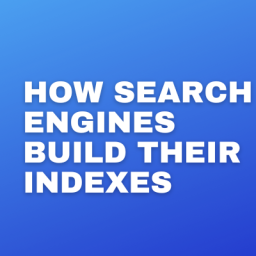
How To Plan Your SEO Strategy?
Suppose you’re already conversant with why you need to understand and integrate SEO on your website. In that case, you may be questioning how to accomplish every SEO task that your site needs in a formulated and compelling manner.
An SEO roadmap provides a powerful plan for performing every step of the process to avoid lacking anything that could be negative to your SEO results.
It’s particularly helpful when handling teams sprinkled across the world and for massive projects that must be meticulously managed. A roadmap allows your team to acknowledge market changes ardently and creates a simplified process for heavyweight tasks.
This article will give you an overview of what an SEO roadmap is and what it should cover. Request a free template to help you get started.
What Is an SEO Roadmap?
An SEO roadmap is a ranking blueprint that lays out all the SEO methods you will use. A roadmap can be made for your own business’s SEO game plan or as a recommendation to show clients how their SEO will be organized. It’s a great way to exhibit what you’ll do and how you’ll reach your desired result. This way, whether you’re sharing the roadmap with a client or with your team, everyone is synchronized about the SEO procedures.
Another convenient use for a roadmap is to design an SEO timeline. With this, you can plan your projects ahead of time.
As well as providing a timeline, a roadmap can delineate potential obstacles and processes for resolving concerns along the way.
It is usually divided into phases, each with a specific SEO goal.
And, you can make them as straightforward or as exhaustive as you’d like. However, for it to add value to your business or client, you must implement the roadmap perfectly.
Understanding the Difference Between an SEO Roadmap and an SEO Strategy
Many people may get baffled by the difference between an SEO roadmap and an SEO strategy. They both have to do with preparing and executing SEO, right?
While that’s not wrong, they do offer distinct approaches. Think of it this way: the SEO strategy is the “what” and the “why,” whereas the SEO roadmap is the “how.”
The two work together to create a highly prosecutable set of tasks to reach your SEO goals.
Why Use an SEO Roadmap?
Apart from the benefits mentioned above, an SEO roadmap can be a game-changer for your business in the following ways:
Increased Flexibility
When it comes to SEO, there are always changing guidelines and customer needs. Having said that, you need a flexible plan that can adjust to unforeseeable changes.
An SEO roadmap makes SEO tasks, deliverables, and even methodologies more fluid. Thanks to this, an SEO team can quickly pivot and continue forward with achieving SEO goals.
Capitalize on Quick Wins
The purpose of a quick win is to find spots where minor changes gain traction. You can make great progress on traffic and rankings that already exist. On top of that, an SEO team can tackle quick wins with minimal development resources. For example, fixing title tags or speeding up the hosting.
An SEO roadmap allows you to see where you can make quick wins so that you don’t miss any opportunities, improving your SEO strategy overall.
Keep Huge Projects Organised
One of the most important parts of having an SEO roadmap is running large SEO projects and keeping everything organized. With so many people involved and different tasks, your roadmap will be paramount in ensuring nothing slips through the cracks.
What Should Your SEO Roadmap Cover?
While every SEO roadmap will be unique depending on the project, there is a structure that we like to follow. It helps ensure every aspect of your roadmap is covered from start to finish. And, it’s broken down into five convenient phases:
Discovery (market, competitors, target audience)
-
- Research (new and existing opportunities, competition)
-
- Creative (materials for different stages in the funnel)
-
- Optimization (site-wide optimization to improve information architecture)
-
- Digital PR (outreach for brand exposure and backlinks)
We’ll go over each phase in more detail below.
Phase #1: Discovery
In the discovery phase, you’ll start with the basics. Here, you’ll dive deep into the project’s goals, market, competitors, and target audience.
Having a strong understanding of these components is fundamental to your roadmap, so ensure to spend time thoroughly investigating and elaborating on this section.
Target Audience
Which potential customers are you targeting? This market could be based on geography, psychographics, or demographics.
To conclude your target market, you must do online research, check your analytics, and even conduct focus groups.
Most importantly, what we want to zero in on here, is the target market’s pain points. What do they want? What do they feel after buying the product?
Market
This section determines exactly how your business is filling in market gaps. What is missing that people need? What problem are you solving for people?
Competitors
Who is your biggest competition? Which competitor has the most organic traffic? Knowing about your competitors can help you set campaign goals and understand where you stand.
Campaign Goals
The SEO campaign goals are possibly the most essential part of your SEO roadmap. This is where you’ll outline every outcome you want from the project, and you and your team can refer to it when making big decisions. Does the decision serve the goal? Are the goals realistic for the project’s depth?
Setting goals in the first phase of the SEO roadmap clarifies the campaign objectives and gives everyone set stones to work towards.
Phase #2: Data Research
The research phase focuses on gathering as much data analytics as possible to develop strong conclusions about which kinds of content the project should take on.
You’ll look for room within new and existing opportunities and opportunities based on competitive key players.
Generally, when referring to content, we have target keywords and content ideation/creation.
Target Keywords
If you could put yourself in the target market’s shoes, what would you be searching for?
Finding the right keywords ensures your budget isn’t wasted on search queries and traffic irrelevant to your campaign. Having said that, it’s vital to spend enough time on this phase to develop a strong set of targeted keywords.
Here’s a list of tools the Break The Web are fans of to help with initial Keyword Research & Topic Ideation:
-
- Ahrefs
-
- SemRush
-
- Answer The Public
-
- Keywords Everywhere
-
- AlsoAsked
Content Ideation
After you’ve determined target keywords, you can start thinking about what kind of content to create around them. Again, put yourself in the audience’s shoes — What kind of content do they want to read? Do they enjoy how-to articles, product reviews, or expert pieces?
This is an important part of your roadmap, because creating content that doesn’t hit the mark just wastes resources, and time, and you could turn the audience off. Worst of all, if the person you are presenting the roadmap to (whether it be a client or your team) sees that the topics are often failing, it can lead to a pitfall of bad credibility and autonomy.
You can find topics to include in your roadmap by brainstorming, seeing what kinds of content competitors are writing about, staying ahead of trending topics, and newsjacking.
Phase #3: Creative
The creative phase is all about producing content for different stages of the funnel. The material needs to be based on keyword and opportunity research to match search intent.
In this phase, you can consider whether you’re a thought leader in your industry, look at your content strategy as a whole, and determine your capacity based on how many writers you have.
Remember, your team should always keep the conversion goal in mind when creating content and implement strategies in every piece of content.
What kind of content converts the most? Engaging content keeps readers hooked. On top of that, aim to create marketable material, be resourceful for readers, and always include data and statistics to back up your claims.
Phase #4: Optimization
The fourth phase of your SEO roadmap is optimization. On-site optimization focuses on improving the organization and structure of content on your website, social media software, and web and mobile applications.
Optimization also has to do with thematic and contextual relevance to increase user experience. You can use tools like Google Natural Language Processing and IBM Watson.
Here are some categories you can add to your roadmap in the optimization phase:
-
- Technical SEO
-
- On-Page SEO
-
- Gap analysis
-
- Thematic Relevance
The most important components of this list are technical and On-page SEO.
Technical Auditing
Performing frequent audits is important to detect and eliminate any deficiencies and technical errors. It’s a way to boost the project’s SEO quality as a whole.
You can include questions to answer in your roadmap such as what technology is powering your website? Have you ever optimized your code before? Are you capable of making advanced modifications?
On-Page SEO
Whenever you create content, you must implement on-page SEO. When planning your roadmap, look at previous on-page SEO efforts, where you can improve them, and if you have someone qualified to make changes to existing on-page SEO efforts.
Phase #5: Digital PR
Another component you’ll include in your SEO roadmap is Digital PR & Link Building. Link Building is the process of getting other websites to link to yours, which tells search engines that your website is being recommended by others, so the content must be trustworthy.
Your SEO roadmap should outline which blogs & websites have trust and give stronger links. You can also set goals for the number of mentions/links per month you get and other similar goals.
Your Digital PR/Link Building campaign is what will drive the majority of links to your blog. Have you conducted a campaign like this before? Are there any issues with the quality of existing or creating new backlinks? Do you have people on your team to do outreach?
Link-building has to do a lot with the relationships you create with other blogs. If you nurture your relationships, you have a much higher possibility of those blogs offering or accepting a backlink.
Final Thoughts
There are many movable parts to constructing a strong SEO roadmap. Many of those parts will depend completely on the type of venture you have, so this article is meant to act as a guide to help you produce your roadmap.
We did, however, state what’s consistently included in an SEO roadmap: the five phases, including discovery, research, creative, optimization, and link-building. Doing so will help you and your team plan and stay formulated throughout the venture.
A roadmap will make your team’s SEO efforts much more prosecutable, and if the project is meant for a client, you can share the roadmap with them so they feel confident your team is on track and so they know the steps taken to achieve goals.



